Season: 4, Episodes: 5, Faction: Mercenaries

![]()
 Overview
Overview
Kocol was one of the mercenaries aboard the freighter Kahana sent by Charles Widmore to the Island to capture Benjamin Linus and kill the Island’s other inhabitants.


On the Island/freighter (Days 97-100)
4×08 – Meet Kevin Johnson
Upon reaching the Island, Kocol, with the rest of the team, left on a helicopter piloted by Frank Lapidus to reach the Island. Upon their arrival, the team killed Karl and Rousseau and kidnapped Alex. (“Meet Kevin Johnson”)
4×09 – The Shape of Things to Come
Kocol traveled with the mercenaries to the sonar fence, which was deactivated by Alex.
They then invaded the Barracks, killing Doug, a blonde woman, and Jerome. Kocol fired a rocket at Claire’s house, blowing it up and nearly killing her.
Kocol brought Alex to Keamy at his whistle, and then he and the other mercenaries looked on as Keamy and Ben negotiated over her, which ended in Alex’s death. Later that night, Ben summoned the Monster to attack the mercenaries in the jungle near the Barracks. Kocol and the other mercenaries fell back from the Barracks as the Monster attacked them. (“The Shape of Things to Come”)
4×10 – Something Nice Back Home
A severely wounded Mayhew was later seen being assisted by Lacour, along with other mercenaries to the helicopter when they were met by Frank, who convinced them to leave as soon as possible. They then continued on to the helicopter, where they headed back to the freighter. (“Something Nice Back Home”)
4×11 – Cabin Fever
Upon the return of the helicopter to the freighter, Kocol helped to unload the injured Mayhew. He was also present when Keamy and Captain Gault had a showdown on the freighter, and he witnessed the death of the captain. (“Cabin Fever”)
4×12 – There’s No Place Like Home, Part 1
He later patrolled the Orchid station along with Keamy and the other mercenaries, and held a gun to Ben as he surrendered himself. (“There’s No Place Like Home, Part 1”)
4×13 – There’s No Place Like Home, Part 2
Kocol helped escort Ben back to the helicopter. When the mercenaries arrived at the helicopter, the group was ambushed by the Others. Kocol was ambushed by an Other, who jumped out of a tree and pried Kocol’s head backward until his neck snapped. (“There’s No Place Like Home, Part 2”)
Images Source | Image & Source
Related Character Images

Baseball
The name “Kocol” refers to Alex Kocol, Assistant Varsity baseball coach at Harvard-Westlake High School in Los Angeles, CA.
San Francisco Giants
The San Francisco Giants are a Major League Baseball (MLB) team based in San Francisco, California, playing in the National League West Division.
Associated Events & LOST Themes
Associated DHARMA Stations & Location
Decoded Season 1 Characters
Decoded Season 2 Characters
Decoded Season 4 Characters
Key Episode(s) to Decoding the Character
|
|

Wiki Info
In Greek mythology, Polybotes was a Gigante (giant), therefore son of Gaia (Mother Earth), who fought Poseidon during the battle between the Giants and the Gods.
Etymology
 The name Polybotes means literally “feeding many” (poly = many) in classical Greek, where he may have originally been a fertility god.
The name Polybotes means literally “feeding many” (poly = many) in classical Greek, where he may have originally been a fertility god.
The Story
The most ancient of the Greek gods, Ouranos (Uranus, the sky), imprisoned all of his children (the Titans, or elder gods) in Tartarus, to keep them from seizing his power. Their mother, Gaia (Gaea, the earth) pled for the release of her children, and when Ouranos would not relent, she convinced Cronus, their youngest son, to ambush and castrate him in revenge.
The blood that fell to from Ouranos’ gonads as he was so injured fertilized the earth, causing the 24 Gigantes to be born. Ouranos was then overthrown by Zeus, who also refused to release the Titans. In outrage, Gaea encouraged the Gigantes to attack Zeus and his fellow gods, in order to free the Titans. During the ensuing battle, known as the Gigantomachy, the god Poseidon defeated Polybotes by ripping a part of the island Kos apart with his bare hands and hurling it at him. This fragment ended up forming the island of Nisyros.
Mythological Family Members & Associated Deities

The Giants
In Greek mythology, the Giants were the children of Gaia, who was fertilized by the blood of Uranus, after Uranus was castrated by his son Cronus.
Cronus secured his power by re-imprisoning or refusing to free his siblings, the Hecatonchires and Cyclopes, and his (newly-created) siblings the Giants in Tartarus. Afterwards, Cronus and his Titans lost the battle to his son Zeus.
Gigantomachy
 Gaia, incensed by the imprisonment of the Titans in Tartarus by the Olympians, incited the Giants to rise up in arms against them, end their reign, and restore the Titans’ rule. Led on by Alcyoneus and Porphyrion, they tested the strength of the Olympians in what is known as the Gigantomachia or Gigantomachy. The Giants Otus and Ephialtes hoped to reach the top of Mount Olympus by stacking the mountain ranges of Thessaly, Pelion, and Ossa, on top of each other.
Gaia, incensed by the imprisonment of the Titans in Tartarus by the Olympians, incited the Giants to rise up in arms against them, end their reign, and restore the Titans’ rule. Led on by Alcyoneus and Porphyrion, they tested the strength of the Olympians in what is known as the Gigantomachia or Gigantomachy. The Giants Otus and Ephialtes hoped to reach the top of Mount Olympus by stacking the mountain ranges of Thessaly, Pelion, and Ossa, on top of each other.
The Olympians called upon the aid of Heracles after a prophecy warned them that he was required to defeat the Giants. Athena, instructed by Zeus, sought out Heracles and requested his aid in the battle. Heracles responded to Athena’s request by shooting an arrow dipped in the poisonous blood of the dreaded Hydra at Alcyoneus, which made the Giant fall to the earth. However, the Giant was immortal so long as he remained in Pallene. Athena advised Heracles to drag Alcyoneus outside Pallene to make the Giant susceptible to death. Once outside Pallene, he was beaten to death by Heracles. Heracles slew not only Alcyoneus, but dealt the death blow to the Giants who had been wounded by the Olympians. The Giants who died by the hero’s hands were Alcyoneus, Damysos, Ephialtes, Leon, Peloreus, Porphyrion and Theodamas, giving Heracles the most kills of the Gigantomachy.
The Olympians fought the Giants with the Moirae aiding them before the aforementioned prophecy was made, meaning the Giants would have overcome the combined efforts of both Olympus and the Sisters of Fate had Heracles not fought.
“Power is latent violence, which must have been manifested at least in some mythological once-upon-a-time. Superiority is guaranteed only by defeated inferiors,” Walter Burkert remarked of the Gigantomachy.
This battle parallels the Titanomachy, a fierce struggle between the upstart Olympians and their older predecessors, the Titans (who lost the battle). In the Gigantomachy, however, the Olympians were already in power when the Giants rose to challenge them. With the aid of their powerful weapons, the Moirae and Heracles, the Olympians defeated the Giants and quelled the rebellion, confirming their reign over the earth, sea, and heaven, and confining the Giants into Tartarus. The only Giant not slain in the conflict was Aristaios, who was turned into a dung beetle by Gaia so the Giant might be safe from the wrath of the Olympians.
Whether the Gigantomachy was interpreted in ancient times as a kind of indirect “revenge of the Titans” upon the Olympians — as the Giants’ reign would have been in some fashion a restoration of the age of the Titans — is not attested in any of the few literary references. Later Hellenistic poets and Latin ones tended to blur Titans and Giants.
According to the Greeks, the Giants were buried by the gods beneath the earth, where their writhing caused volcanic activity and earthquakes.
In iconic representations the Gigantomachy was a favorite theme of the Greek vase-painters of the 5th century BC.
More impressive depictions of the Gigantomachy can be found in classical sculptural relief, such as the great altar of Pergamon, where the serpent-legged giants are locked in battle with a host of gods, or in Antiquity at the Temple of Olympian Zeus at Acragas.
Image Source | Image Source | Image & Source



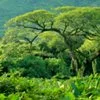






















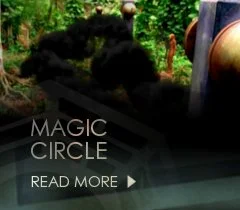






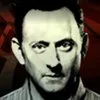




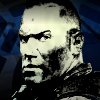
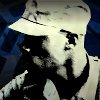



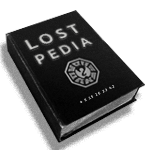

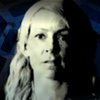










You must be logged in to post a comment.